 German observation Floatplane (1937), 541 produced 1939-44.
German observation Floatplane (1937), 541 produced 1939-44.
The Arado 196 in brief
 The Arado Ar 196 was a German single-engine reconnaissance seaplane used during World War II. It was designed by Walter Blume and produced by the Arado Flugzeugwerke. The Ar 196 was primarily used by the German Navy (Kriegsmarine) for maritime reconnaissance and observation missions.
The Arado Ar 196 was a German single-engine reconnaissance seaplane used during World War II. It was designed by Walter Blume and produced by the Arado Flugzeugwerke. The Ar 196 was primarily used by the German Navy (Kriegsmarine) for maritime reconnaissance and observation missions.
Role: The Ar 196 served as a shipborne reconnaissance aircraft, typically launched from and recovered by catapult-equipped warships. It was powered by a single BMW 132K nine-cylinder air-cooled radial engine, providing it with a top speed of around 311 km/h (193 mph). It had two machine guns in the wings and a single one manned by the rear gunner, but could also carry light bombs or depth charges.
The Arado Ar 196 saw service during the early to mid-1940s, operating from German Navy battleships and cruisers, and was also used in a coastal reconnaissance role. There was a land-capable amphibious version, the Ar 196A-3 which was given a retractable landing gear for land-based operations. It remained in service until the end of World War II.
The Arado 196 was designed when the Kriegsmarine placed official requirement, to replace the Heinkel He 60 catapulted float/biplane. Indeed, its intended successor, the He 114 was not satisfactory to say the least. Arado decided to submit its own monoplane design (The He 114 was a biplane) to the Reichsluftfahrtministerium, the German Air Ministry (abbreviated RLM). The competition at the time called for biplanes, so the RLM recoignised Arado’s proposal, modified the bid and asked for four prototypes of the Arado 196, to be delivered by late 1936.
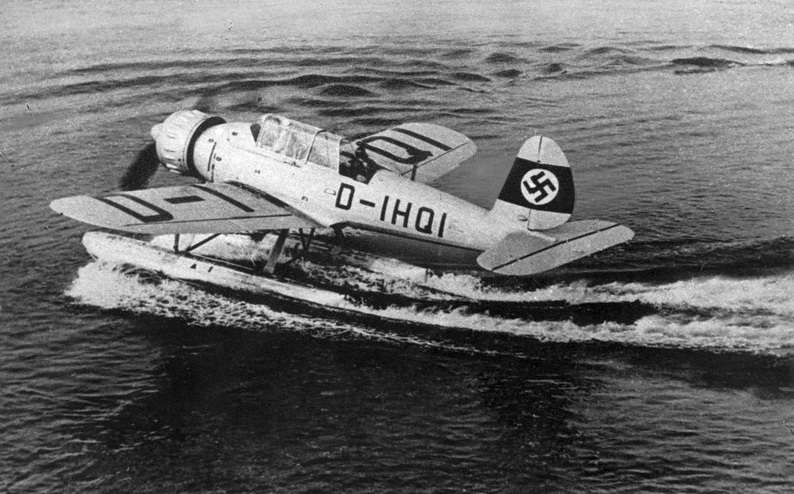
V2 prototype in 1938
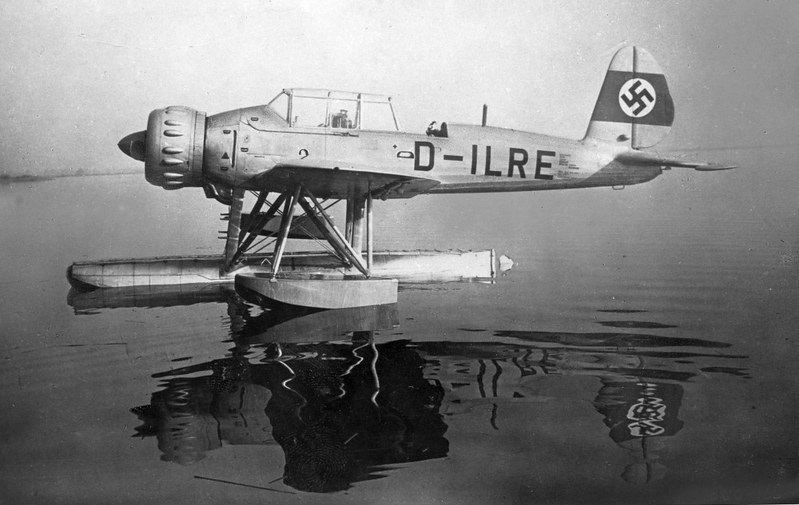
V3 prototype, testing the central float configuration wanted by the RLM.
These prototypes, tested a year later (late 1937) were noted favourably, with excellent performance characteristics and so the production was authorised. Ten A-0s were delivered in November and December 1938, with service tests starting by 1939 and five B-0s were were delivered to land-based squadrons with undercarriage, then 20 A-1 earmy production models delivered from June 1939, just enough for all the surface fleet. By November 1939, the land-based Ar 196 A-2 appeared. But the bulk of the production concerned the A4/A3 from Dec. 1940 until mid-1941 and A5 in late 1941 before it was terminated by Albert Speer in August 1944.
Development
In 1933, the Kriegsmarine wanted a standardized shipboard observation floatplane and the matter was linked to a bid leading to a brief selection period under which Reichsluftfahrtministerium decided on the Heinkel He 60 biplane developed from an in-house basic biplane airframe declined by the company into floatplanes, trainers and fighters. So Ernst Heinkel could deliver its prototype in a few months.
It was tested in late 1934 and until early 1935, until the RLM determined its performance were lacking, and requested that Heinkel review its copy, design a better replacement aircraft. The company did with the He 114, which first prototype flew with a Daimler-Benz DB 600 inline engine. However DB had difficulties producing this engine, and given the delivery rate, the RLM directed Heinkel to seek another powerplant in large usage for the production version. This was a readily available, trusted BMW 132 radial engine. But due to its worst profile, performances turned out just marginally better than the He 60, and sea-handling worst. It did not also met strength requirements to be catapulted.
Heinkel, still willing to not loose the contract, rushed modifications and created nine prototypes to hope solving some problems, but eventually the Kriegsmarine commission in charge concluded the Heinkel He 114 was a lost cause, and the RLM took them over, to be resold to Romania, Spain and Sweden. So by October 1936, the Krisgmarine still operated the now obsolete He 46, and had no replacement. It was requested in their name by the RLM and specification issued stipulated its engine would be the BMW 132, and that any competirtor should provide for testings prototypes in two configurations, central float (plus two underwings floats) or a twin-float configuration for comparatiuve testings.
To this bid, proposals were received from Dornier, Gotha, Arado and Focke-Wulf, but Heinkel declined and repeated its He 114 was a workable base. All came up with biplan designed except Arado, which proposed a low-wing monoplane. It soon appeared as the most modern and capable so the RLM placed an initial order for four prototypes.
On 1 June 1937, the first prototype Ar 196 V1, made its maiden flight, on the Plauer See. It completed its flight test programme and Arado started modifying the V1 accordingly, notably to achieve a greater speed, and if possible, reach a record speed in its category. The first step was to install a more powerful BMW 132SA radial engine, and add a redesigned, lower canopy and well as reworking many aerodynamic details about the airframe. But it was prevented a new flight by the RLM which forbade Arado to go further under the imperative of “maintaining military secrecy”.
All prototypes were delivered by the September 1937, V1 and V2 being the twin floats verisons (196A models) and V3/V4 the single float (196B models). By December these four were in intensive flight test programmes, revealing their true superiority to the Fw 62 used as backup. Indeed, the RLM being conservative by nature, two Focke-Wulf Fw 62 were ordered. But the Arado 196 not only performed better in all area, it was also easier to manufacture and cheaper, so albeit Fock Wulf delivered two more Fw 62 prototypes for extra comparative tests, the RLM concluded the Ar 196 was the superior aircraft.
In their report they noted its better handling and flight qualities with a higher loading, and stronger structure, well adapted to its role. It looked more rugged. Albeit both showed excellent water handling, the tests went on, and initially the twin-float version was rejected as causing “greater stress upon the wings” while smaller B types outrigger floats had a tendency to “digg in”. Eventually based on a long set of comparison, the twin float A model was approved for production, maintaininh however the different float arrangements would be kept interchangeable including a pair of ice skis. V5 in November 1938 was the last completed to reflect all these final modifications. Tests would concern catapult launches and divie bombing, putting an immense strain on the wings.
Production
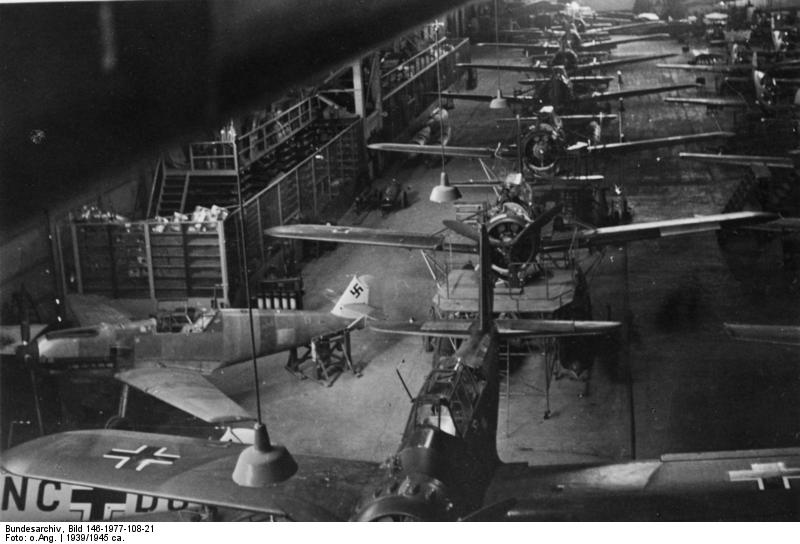
Producton started until November 1939, and then switched to the heavier A-2 model, nit intended to be catapulted, but semi-aphibious and deployed from shore bases and for coastal patrol in the baltic and north sea. Shackles under the wings were added to carry if needed two 50 kg (110 lb) bombs. The armament was very consistent, with two 20 mm MG FF cannons placed in the wings, and anoter extra 7.92 mm (.312 in) MG 17 in the cowling while it kept its tail MG of the same model on a flexible mount.
Armament was indeed left blank in the original specification and the early A0 were outfitted for aerial reconnaissance and spotting, notably of enemy submarines, and were lighmy armed with a single cowling MG and another for defence. The weapons additions reflected wartime operational experience, since the model did spot and met enemy planes and was woefully under-armed to face them. This new armament was ported on the A2 and A3.
Fifteen A-4 were produced by December 1940 for the sole usage of Kriegsmarine’s capital ships (Scharnhost, Bismarck class and the thwo Lützow) strengthening the airframe, adding another, better radio, changing the propeller to a VDM . The land-based A-3 also received in parallel a strengthening of the airframe and was produced until the autumn of 1941.
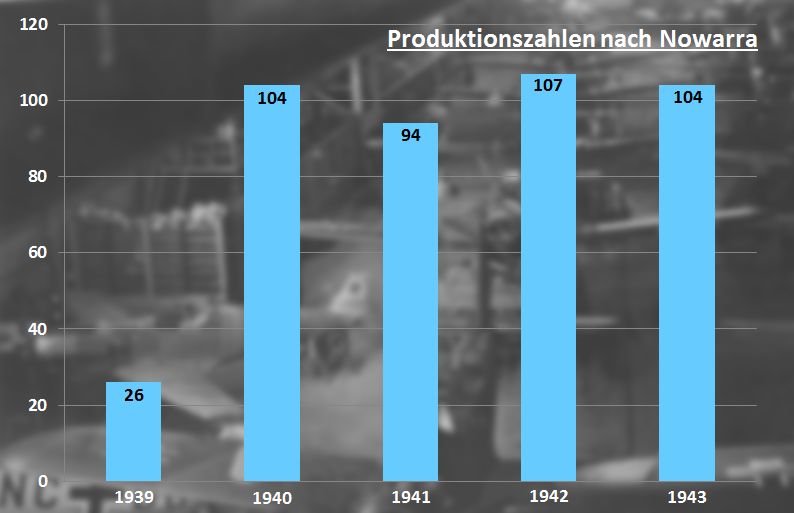
The last version A-5 appeared by late 1941: Radios were modernized as well as cockpit instruments, armoured protection was added for both seats, and the rear gunner received the better MG 81Z cannon with with 2000 rounds, while the wings MG FF/M received 90 round magazines. The airframe was also further strenghtened and the new engine was the BMW 132W to keep performances.
Wartime demands were such that Arado could not keep up and licensed the 196 to the French aircraft manufacturer SNCASO under German control. In 1942, it was producing 30 more, but with lower quality, down to near-sabotage by the workforce. In 1943 under Speer’s directives, Arado had to reorganize its manufacturing, decentralising, dispersing the whole process into smaller workshops to evade strategic bombing.
But the company was not done with its model and already proposed in 1940 a well aerodynamically-refined model called the Ar 196C. It had larger, redesigned floats and was tested in Hamburg. The RLM ordered its production to start in in 1942, but this was later cancelled amidst other priorities and the rapidly declining strenght of the Krigsmarine, focusing on U-Boats. By August 1944 a grand total of 541 Ar 196s (inclding 15 prototypes) had been delivered, including 100 by SNCASO and Fokker in the Netherlands.
Design of the Arado 196
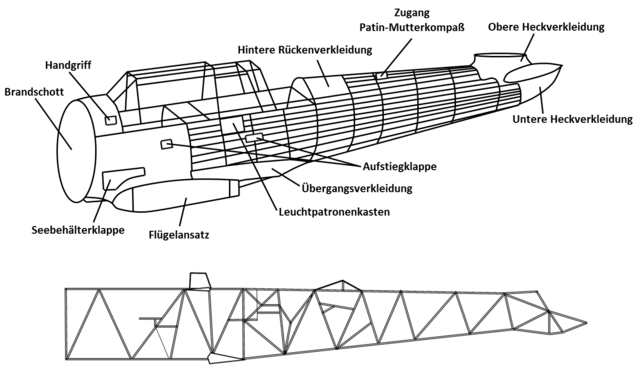
Fuselage structure
The Ar 196 was a semi-cantilever low-wing aircraft with a fuselage derived from the Arado Ar 95 patrol biplane. Both the wings and forward fuselage were coverted in metal but fabric was still applied to the empennage and rear fuselage. All external metal parts, especially under the plane, were made in Hydronalium, an alloy resistance to maritime corrosion. The two floats had their interior space divided into tanks to be used to house fuel.
Fuselage and wings
The Fuselage had a circular section covered with duralumin up to the middle (and itself covered by Hydronalium) whereas the oval section ending in the tail was wrapped in canvas. The two-seat cockpit had a common canopy sliding back and telescopic. The rear section was generally folded down to leave ample space for the gunner. There was a radio station installed close to the observer/gunner position wotking in short-wave and long-wave ranges up to 600 km. The aft fuselage section also cointained a folded rubber boat.
The wings were made entirely in metal with two-spar and were trapezoidal in plan, and ended with rounded tips: The center section was ended by two folding consoles. The folding wings were indeed requested from the start and enable to place two of these in a relatrively small hangar. Landing flaps and ailerons with trim tabs completed the outer wing design. Balance was good, with a center of mass shift ranging from 19 to 27% of the average aerodynamic chord.
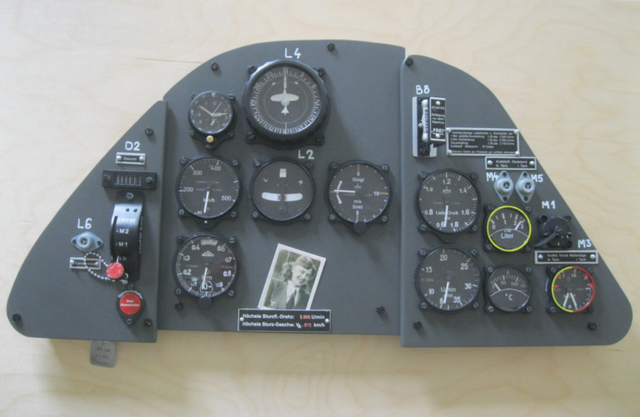
Dashboard design, A1/A2
The tail was single-finned and free-carrying, while the stabilizer and keel were in metal, elevators and rudders had metal frames covered with linen. The single piece elevator had rounded tips. The steering wheels received an aerodynamic compensaiton plus weight balancing and the rudders each had a trim tab.
The two floats were all-metal and possessed at the tail water rudders activated via cables by the pilot when taxxing. The floats were attached to the fuselage via solid tubular and profiled V-struts with reinforcement cables. The 300 L fuel tanks were located for balance in the middle of both floats, in front of the redan. Both were detachable. There were also smoke generators in the engine to conceal the aircraft under a smoke curtrain when taxiing. To be moved from the hangar onboard ships to the catapults, they were moved on a tricycle trolley supporting both floats.
Engine
The Arado 196 came with a BMW-132K single-row radial engine, nine-cylinder and air-cooled. It was fitted with a single-speed supercharger. Nominal output at 3,000 meters (9,842 ft) at 2400 rpm was of 960 HP. Takeoff power at sea level, was 1000 hp at 2500 rpm. There was a three-bladed part metal propeller with variable pitch, with metal hub and crown, but wooden blades at first. The engine hood was certified NACA with teardtop shaped cylinder caches. The fuel systemrested on three tanks, the one in the fuselage in the middle and two in the floats, with proper connections inside the struts, for a total fuel capacity of 670 kg.
Armament and equipments
The Arado 196 was pretty well armed in its category, with two 20-mm MG FF cannons in the wing consoles, plus the 7.92 mm MG 17 in the engine right side, pasing between cylinders and synchronized, and a rear flexible “K” type mounted 7.92-mm MG 15 machine gun for observer/gunner; This semi-pintle mounts enable a great arc of fire while leaving the compartment largely free of clutter: 70° elevation and 90° both sides from the axis. There were also optional bombs suspended under two SC 50 underwing racks, normally 50 kg or below, with compatible attachement points. They could be dropped either by the pilot of observer.

Specifications Arado 196 |
|
| Crew: | 2: pilot, observer/gunner |
| Lenght | 11 m (36 ft 1 in) |
| Wingspan | 12.4 m (40 ft 8 in) |
| Wing loading | 98.2 kg/m2 (20.1 lb/sq ft) |
| Power/mass | 0.235 kW/kg (0.143 hp/lb) |
| Height | 4.45 m (14 ft 7 in) |
| Wing area | 28.4 m2 (306 sq ft) |
| Empty weight | 2,990 kg (6,592 lb) |
| Max TO Weight | 3,720 kg (8,201 lb) |
| Propulsion | BMW 132W 9-cyl. air-cooled radial 782 kW (1,050 hp) |
| Propeller | 3-bladed constant speed metal |
| Top speed | 332 km/h (206 mph, 179 kn) |
| Service ceiling | 7,010 m (23,000 ft) |
| Rate of climb | 6 m/s (1,200 ft/min) |
| Range | 1,080 km (670 mi, 580 nmi) |
| Ferry range | |
| Gun Armament | 7.92 mm (0.312 in) MG 81Z, 7.92 mm MG 17, 2× 20 mm (0.787 in) MG FF/M |
| Armament underwing | 2 × 50 kg (110.231 lb) bombs |
The Ar.196 in action
All capital ships of the Kriegsmarine were equipped with Ar 196s, so it accounted only for a relatively small number: The two “terrible sisters” of the Scharnhorst class had three each, the two Bismarck had four, the three Königsberg class on each, the two Leipzig and the three Hipper class completed had at least two, the surviving Deustchland class Lützow and Scheer had one each as well as all ten merchant cruisers (Hilfskreuzer) had one. Total around 36 in the 196 Bordflieger Gruppe (on-board squadron subdivision) for the whole surface fleet, and around 12 more spare aircraft.
The bulk however were used by shore based units. They were commonly used by numerous coastal squadrons to perform reconnaissance missions but also submarine patrols until late 1944 especially above the Mediterranean, Aegean, and Black Seas where allied subs were present in numbers and threatened axis lines of communications. For this reasons as Germany lacked pilots, both the Romanians and Bulgarians obtained many 196s to patrol the black sea under supervcision of the Schwartze See Command. One ealry successful engagement in the war, was the involvement of two Ar 196s in the detection and capture of HMS Seal, a British minelayer submarine. Numerous ones were also captured by the Allies and some operated as late as 1955 (in Soviet service). Some survived to this day, preserved for static display since so far none is in airworthy condition.
So the Bordfliegergruppe (Ship Aviation Group) 196 after the model name was the general surface fleet unit, followed by seven SAGr (for “Seeaufklärungsgruppen” or Naval Reconnaissance Groups), by also KG 100 and KG 200 plus Küstenfliegergruppe 706 (baltic/nordsee coastal patrol) with bases in virtually every threater from France, Italy or the Balkans. Those onboard Bismarck and Tirpitz had varied careers, very short for the first, sunk during operation Rheinübung, not even launching them due to the bad weather encountered. At the end of the hunt, rdder jammed and circling off the coast of France, she tried to launch one Ar 196 loaded with the war logs and other reports but it appeared the catapult had been damage during the Battle of the Denmark Strait. Tirpitz used one during Operation Sportpalast to repel shadowing British scout planes.
The two Scharnhorst-class had two catapults and three Ar 196s initially, and used them exyensively, starting with Operation Weserübung (Scharnhorst launched on at extreme range to Norway, reporting ships present) and was used to bring communicvation between the assault fleets under strict radio silence. Gneisenau’s ones reported the failure of Operation Berlin. The Deutschland-class cruisers were allocated two each but carried just one on catapult, no hangar. Graf Spee used it well during her early raids in the south atlantic. On 11 September it detected the British heavy cruiser HMS Cumberland and prevented a confrontation, but it broke down before the Battle of the River Plate, missing the three incoming cruisers and dooming the ship, later scuttled. All three Admiral Hipper-class cruisers (Hipper, Blücher and Prinz Eugen) also had a catapult for three Ar 196s, two carried generally and as said above all five light cruisers of the “K” class but the older KMS Emden.
The Arado 196 was popular in general, handling well, rugged and long ranged. It was especially efficient over clear waters and was found very useful as main asset used as jacks of all trades in the Aegean islands in particular. It was agile enough to lead interceptions, such as those of RAF Armstrong-Whitworth Whitley bombers. Overall, most historians and aviation specialists considered the Ar 196 as best of its class (as single engine naval recce floatplane), but it had drawbacks as well and was an easy kill for any allied flighter. The Finnish Air Force also used some A-3s (th emost common), later upgraded to A-5s by mid-1944 both for reconnaissance and personal transports, carrying men inside the fuselage or even troops as well as supplies, using the network of lakes in the country to its advantage.
Among the most interesting stories on the 196 was the Penang based, in Japanese-occupied Malaya. By March 1944 two 196 and two Japanese Aichi E13A (to which it’s often compared), forming the “East Asia Naval Special Service” for the German Monsun Gruppe (two Hilfskreuzer roaming the Indian ocean) and Japanese naval forces. The 196 had a Japanese livery and flew under command of Oberleutnant Ulrich Horn. By 18 February 1944 one of the two rescued 13 survivors from the ex-Italian German UIT-23,, making several trips with men attached to its floats.
The first Ar 196 captured was one from Admiral Hipper, captured in Lyngstad, Eide (Norway) by a Norwegian Marinens Flyvebaatfabrikk M.F.11 floatplane from the Trøndelag naval district. It happened on 8 April 1940 just at the start of the Campaign. It was towed to Kristiansund by the torpedo boat HNoMS Sild, then used with Norwegian markings for some time before being starved for parts and excaping to Britain on 03:30 on 18 April, taken over by a Royal Norwegian Navy Air Service pilot, later crashed by a British while on transit for testing. Another Ar 196 was captured on a Norwegian airfield and used for liaison over the west coast in 1945.
In 1944–1945, Soviet forces captured many ob the Baltic coast between Poland and Germany and a spare parts depot, enough to maintain 37 Ar 196s, refitted with Soviet radio equipment, and impressed into the Soviet Border Guard in the Baltic, Black Sea and Pacific until 1955. One was re-engined with a Shvetsov ASh-62 due to the lack of parts from the BMW 132. The Arado 196 A3 thus used by the Bulgarian and Romanian, Finnish Air Forces, both the Kriegsmarine and Luftwaffe, Norway (2 captured), British RAF and Soviet Border Guard.
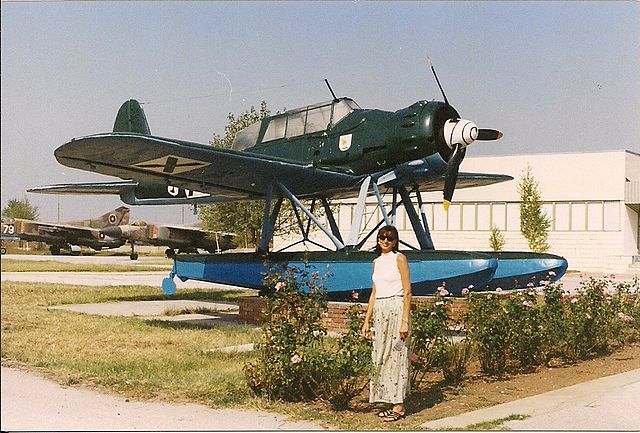
Ex-Bulgarian 196 A3 preserved in Plovdiv
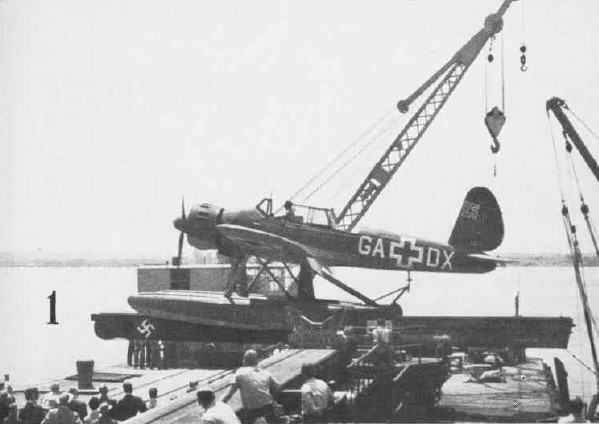
LG2-travemunde39.png)
196A0-10 preserie, LG2 Travemunde 1939
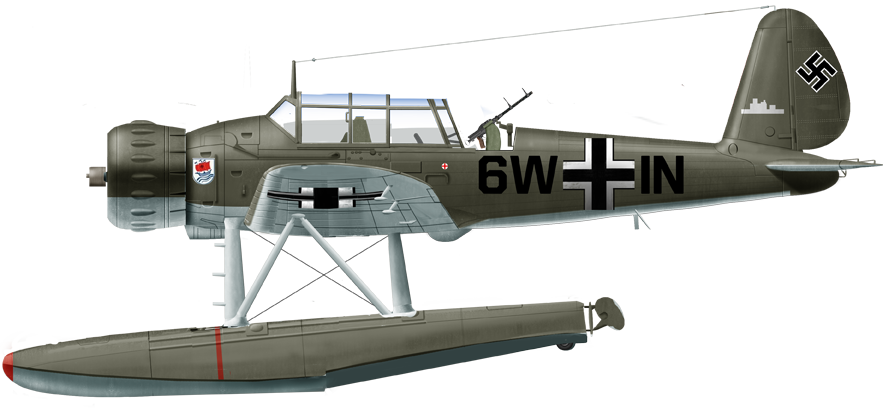
196A1 of an unknown unit

196 A2 HSK-4 Thor, Malaysia 1941
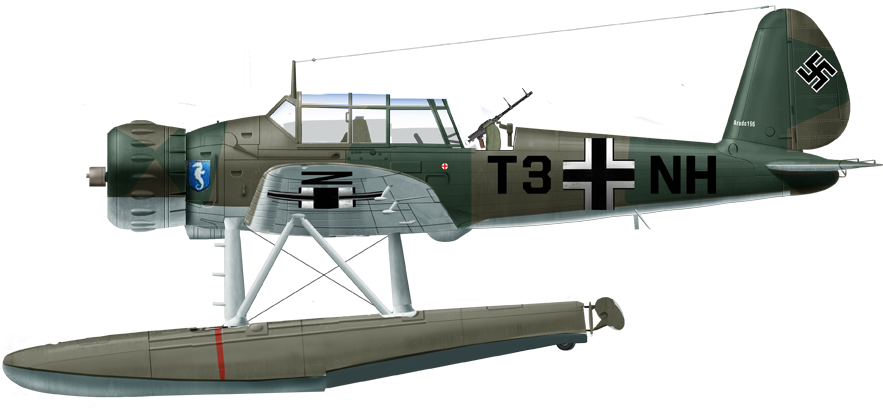
196 A3 Bordflieger Gruppe 196, KMS Scharnhorst, Brest 1941
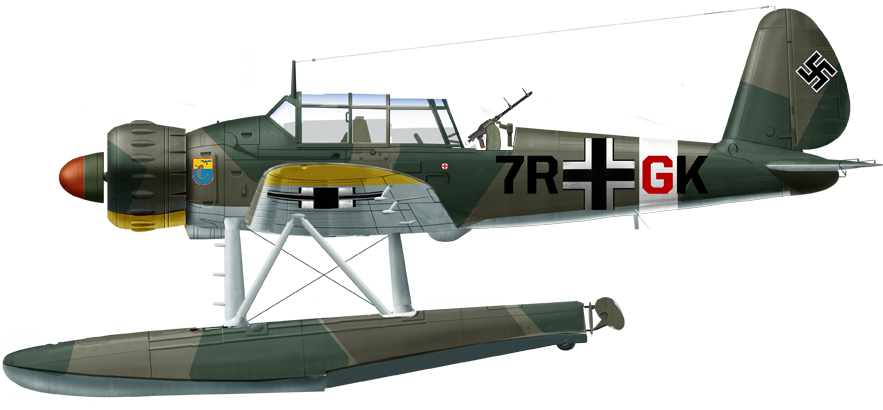
196-A3 2 SaGr 125, Crete 1941
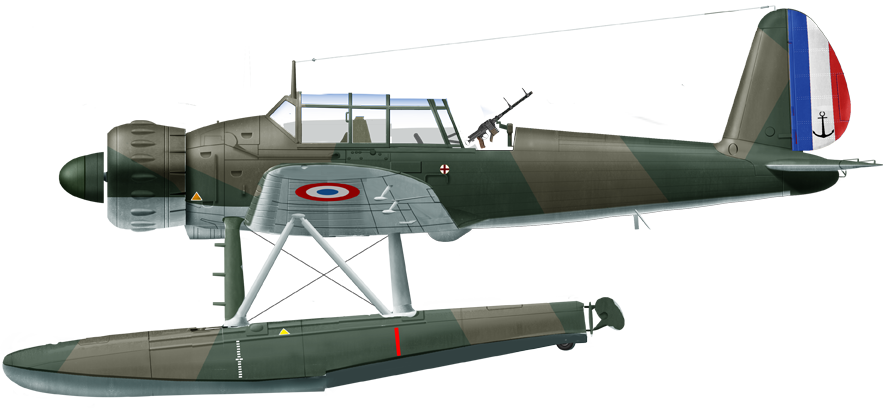
196A3 from HK-6 Komet with False Fr. Markings 1940

196-A3 SaGr-126 Battled and shot down two MBR-2s Baltic 1941

Arado 196A3 vB Bdflgr 196 Cruiser KMS Prinz Eugen 1941

A3 Romanian Escadrila 102 N°2, Cdr. Schirmherrschaft des Auflahrungsfurer Schwarzes meer, Odessa 1943

A3 Bordflieger 2/163, KMS Tirpitz summer 1943
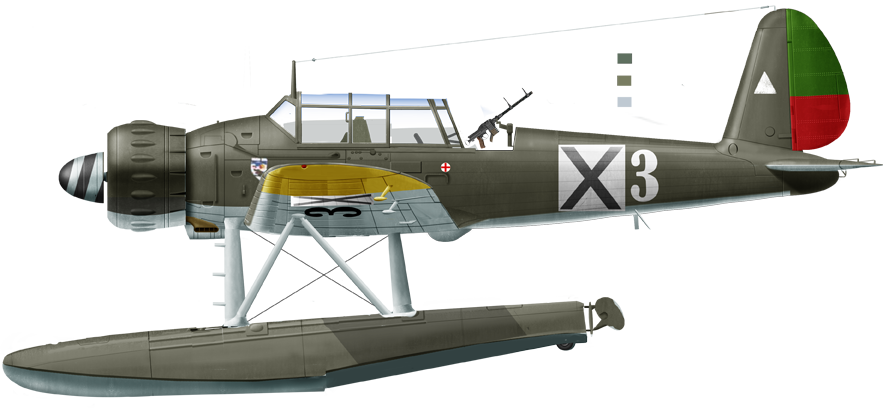
196A3 Bulgarian, Black sea fleet 1944
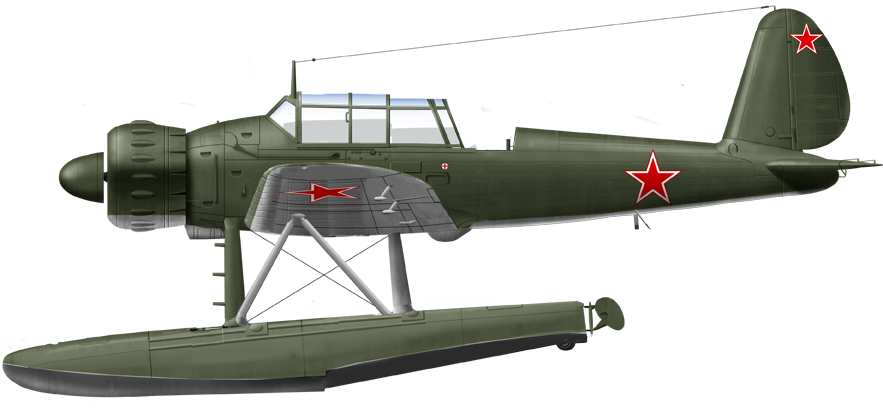
Capt. Soviet 196A3 , Black sea fleet Border Guards 1950. 37 were used until 1955 for some.
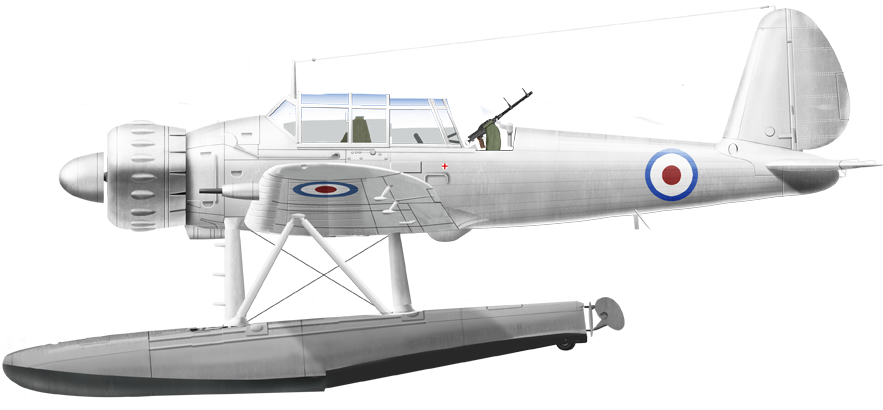
A3 captured 330 Sqn. RAF, Stavanger-Sola Noruega 1945
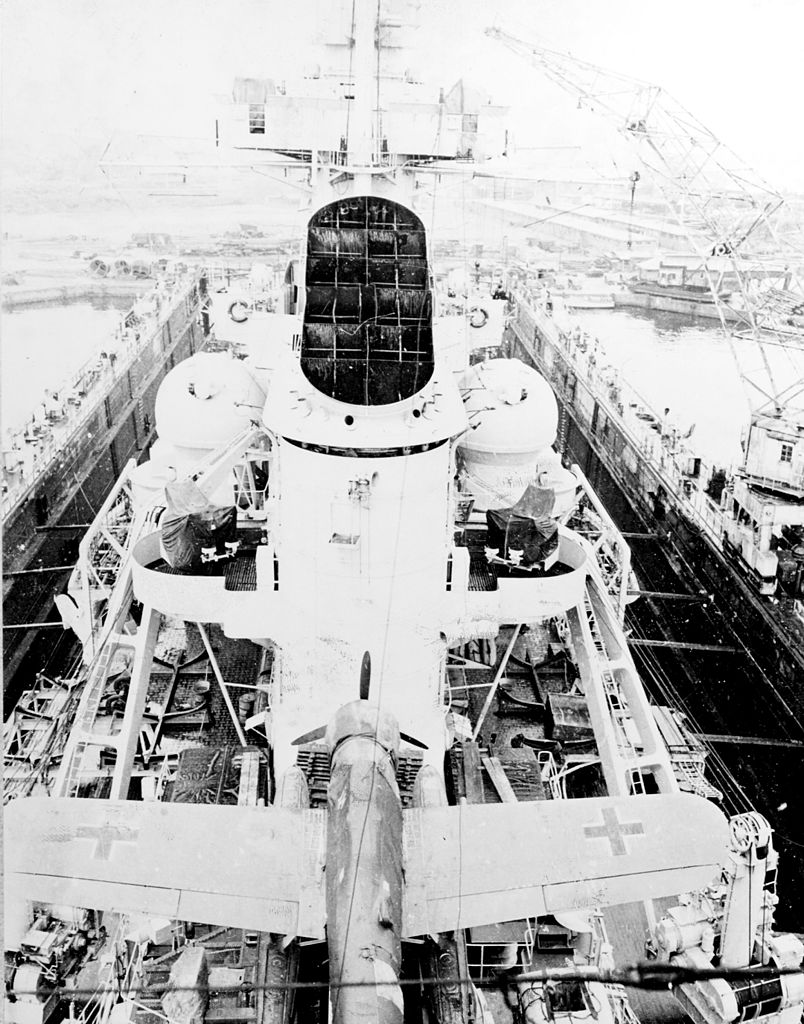
Fwd view ofan A5 onboard KMS Prinz Eugen in 1945
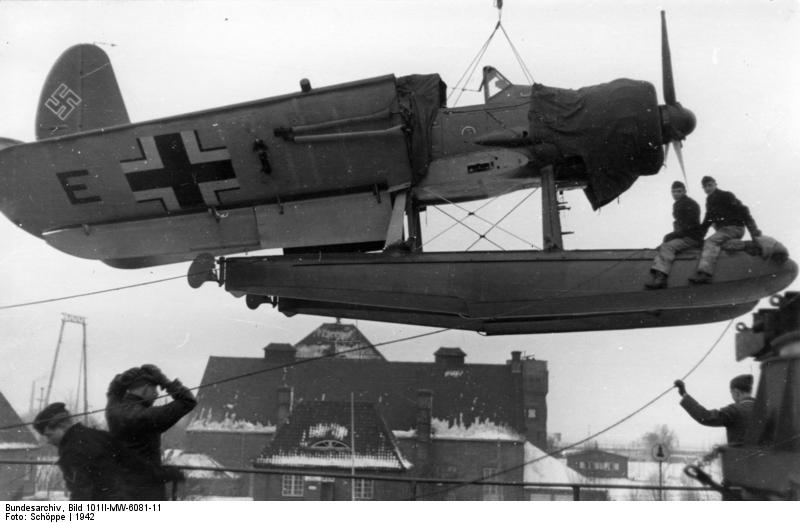
Seeflugzeug Arado 196
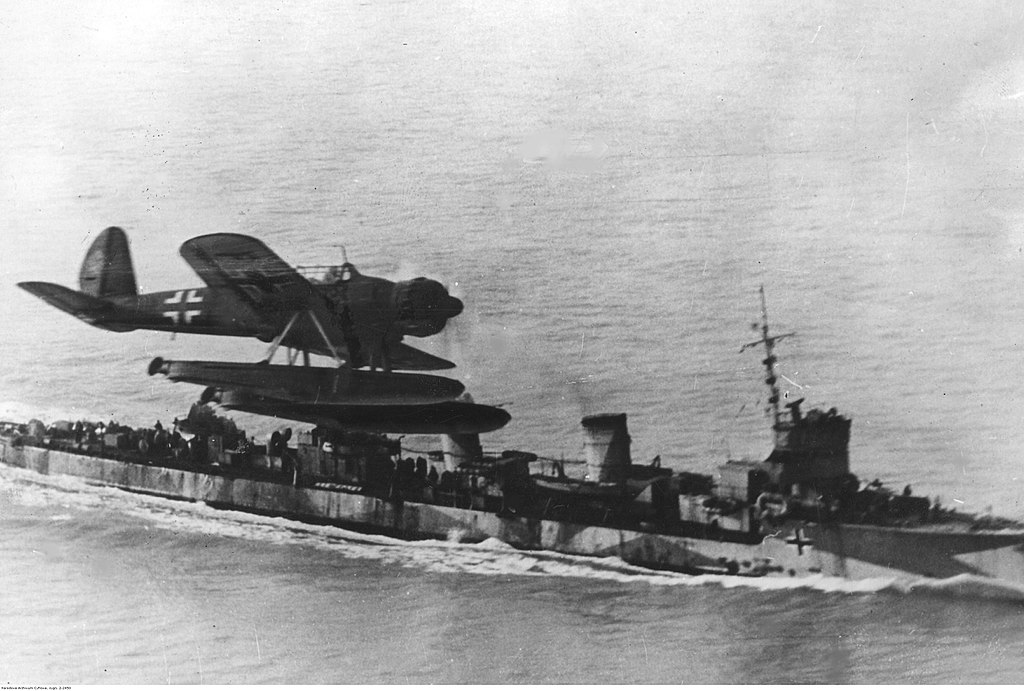
Ar 196 in Italy 1944 flying over German destroyer TA-4 ex Italian Audace
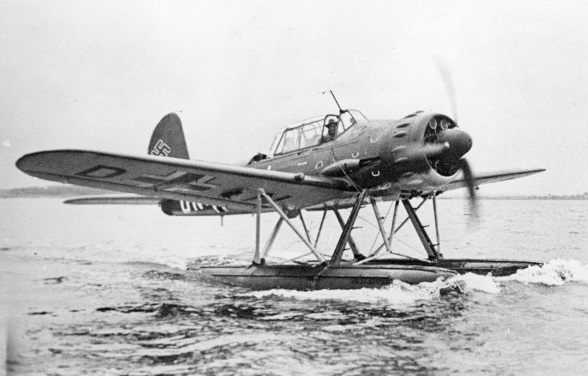
Ar 196 A3
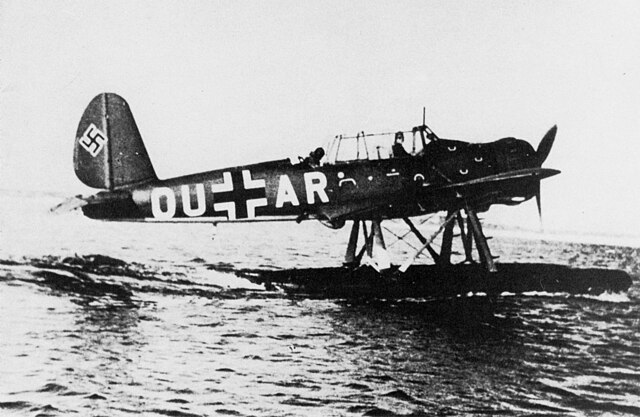
A 196 A2 taxiing in 1940
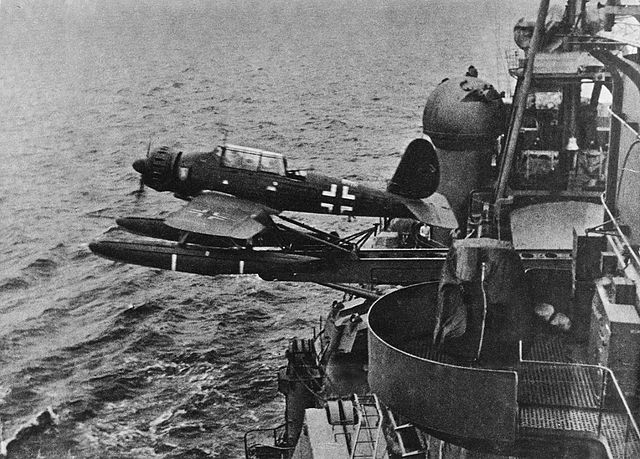
Ar 196 from the cruiser Hipper
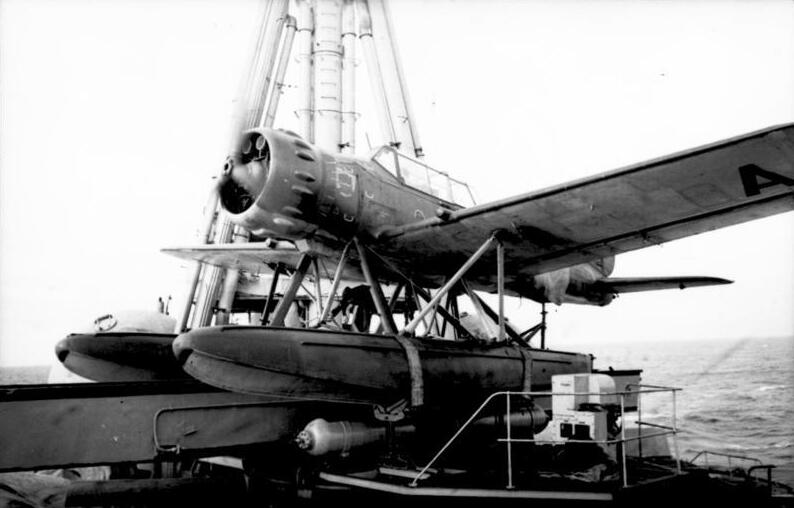
Ar 196 from the cruiser Hipper
Sources
Arado Ar 196 Units in Combat, Peter de Jong, Bloomsbury USA, 23 févr. 2021 – 96 pages
Dabrowski, Hans-Peter; Koos, Volker (1997). Arado Ar 196, Germany’s Multi-Purpose Seaplane. Schiffer Publishing.
de Jong, Peter (2021). Arado Ar 196 Units in Combat. Bloomsbury.
Kemp, Paul (1998). The Encyclopedia of 20th Century Conflict Sea Warfare. Arms and Armour.
Kranzhoff, Jörg Armin (1997). Arado, History of an Aircraft Company. Schiffer Books.
Ledwoch, Janusz (1997). Arado 196 (Militaria 53) (in Polish). Wydawnictwo Militaria.
Müllenheim-Rechberg, Burkhard von (1980). De ondergang van de Bismarck (Dutch). De Boer Maritiem.
Munson, Kenneth (1960). Enemy Aircraft (German and Italian) of World War II. Ian Allan Ltd.
Munson, Kenneth (1978). German Aircraft Of World War 2 in colour. Blandford Press.
Sivertsen, Svein Carl, ed. (1999). Jageren Sleipner i Romsdalsfjord sjøforsvarsdistrikt April 1940
Stephen, Martin (1988). Grove, Eric (ed.). Sea Battles in close-up: World War 2. Ian Allan ltd.
David Doyle books Arado Ar 196: Germany’s Multi-Purpose Seaplane
aircraftaces.com/
ww2.dk
ospreypublishing.com/
airpages.ru
militaryfactory.com
recoverycurios.com
j-aircraft.com
www.asisbiz.com
ipmsmalta.forumotion.net
asasdeferro.blogspot.com
www.si.edu
en.wikipedia.org
airandspace.si.edu
feldgrau.com
german-navy.de
militaryfactory.com
aircraftaces.com
fighter-aircraft.com
commons.wikimedia.org
picryl.com


 Latest Facebook Entry -
Latest Facebook Entry -  X(Tweeter) Naval Encyclopedia's deck archive
X(Tweeter) Naval Encyclopedia's deck archive Instagram (@navalencyc)
Instagram (@navalencyc)





 French Navy
French Navy Royal Navy
Royal Navy Russian Navy
Russian Navy Armada Espanola
Armada Espanola Austrian Navy
Austrian Navy K.u.K. Kriegsmarine
K.u.K. Kriegsmarine Dansk Marine
Dansk Marine Nautiko Hellenon
Nautiko Hellenon Koninklije Marine 1870
Koninklije Marine 1870 Marinha do Brasil
Marinha do Brasil Osmanlı Donanması
Osmanlı Donanması Marina Do Peru
Marina Do Peru Marinha do Portugal
Marinha do Portugal Regia Marina 1870
Regia Marina 1870 Nihhon Kaigun 1870
Nihhon Kaigun 1870 Preußische Marine 1870
Preußische Marine 1870 Russkiy Flot 1870
Russkiy Flot 1870 Svenska marinen
Svenska marinen Søværnet
Søværnet Union Navy
Union Navy Confederate Navy
Confederate Navy Armada de Argentina
Armada de Argentina Imperial Chinese Navy
Imperial Chinese Navy Marinha do Portugal
Marinha do Portugal Mexico
Mexico Kaiserliche Marine
Kaiserliche Marine 1898 US Navy
1898 US Navy Sovietskiy Flot
Sovietskiy Flot Royal Canadian Navy
Royal Canadian Navy Royal Australian Navy
Royal Australian Navy RNZN Fleet
RNZN Fleet Chinese Navy 1937
Chinese Navy 1937 Kriegsmarine
Kriegsmarine Chilean Navy
Chilean Navy Danish Navy
Danish Navy Finnish Navy
Finnish Navy Hellenic Navy
Hellenic Navy Polish Navy
Polish Navy Romanian Navy
Romanian Navy Turkish Navy
Turkish Navy Royal Yugoslav Navy
Royal Yugoslav Navy Royal Thai Navy
Royal Thai Navy Minor Navies
Minor Navies Albania
Albania Austria
Austria Belgium
Belgium Columbia
Columbia Costa Rica
Costa Rica Cuba
Cuba Czechoslovakia
Czechoslovakia Dominican Republic
Dominican Republic Haiti
Haiti Hungary
Hungary Honduras
Honduras Estonia
Estonia Iceland
Iceland Eire
Eire Equador
Equador Iran
Iran Iraq
Iraq Latvia
Latvia Liberia
Liberia Lithuania
Lithuania Mandchukuo
Mandchukuo Morocco
Morocco Nicaragua
Nicaragua Persia
Persia San Salvador
San Salvador Sarawak
Sarawak Uruguay
Uruguay Venezuela
Venezuela Zanzibar
Zanzibar Warsaw Pact Navies
Warsaw Pact Navies Bulgaria
Bulgaria Hungary
Hungary

 Bundesmarine
Bundesmarine Dutch Navy
Dutch Navy Hellenic Navy
Hellenic Navy Marina Militare
Marina Militare Yugoslav Navy
Yugoslav Navy Chinese Navy
Chinese Navy Indian Navy
Indian Navy Indonesian Navy
Indonesian Navy JMSDF
JMSDF North Korean Navy
North Korean Navy Pakistani Navy
Pakistani Navy Philippines Navy
Philippines Navy ROKN
ROKN Rep. of Singapore Navy
Rep. of Singapore Navy Taiwanese Navy
Taiwanese Navy IDF Navy
IDF Navy Saudi Navy
Saudi Navy Royal New Zealand Navy
Royal New Zealand Navy Egyptian Navy
Egyptian Navy South African Navy
South African Navy






























 Ukrainian Navy
Ukrainian Navy dbodesign
dbodesign